What is a High-performance 860-960 MHz 4 dBi Lora Antenna?
The High-performance Omni 860-960 MHz 4 dBi Lora Antenna CTRF-ANTENNA-FB-8696-20250-N is an 868 MHz 915 MHz 4dBi Lora antenna N-type connector glass fiber antenna 4 dBi Lora Antenna manufactured by C&T RF Antennas Inc for indoor-outdoor applications.
The High-performance 860-960 MHz 4 dBi Lora Antenna comes with a 20x250mm Omni fiberglass antenna housing, and N-male connector, the 4 dBi Lora Antenna can be used for GSM900, 2G, 3G, NB-IoT, Lora, and ISM networks.
The Outdoor Antenna High-performance Omni 860-960 MHz 4 dBi Lora Antenna is produced by C&T RF Antennas Inc, the Lora internal antennas & Lora external antennas manufacturer in China.
C&T RF Antennas Inc provides the 15dBi Lora antenna, 11dBi Lora Antenna, 12dBi Lora antenna, 20dBi Lora antenna, 10dBi Lora antenna, 9dBi Lora antenna, 8dBi Lora antenna, 6dBi Lora antenna, 5.8dBi Lora antenna, 5dBi Lora antenna, 4dBi Lora antenna, 3dBi Glass Fiber Lora Antenna, 3dBi Lora antenna, 2.5dBi Lora antenna, 2dBi Lora antenna, etc.
C&T RF Antennas Inc provides Lora antennas with different antenna types such as Through-hole Mount Antennas, Magnetic Mount Antennas, Rubber Duck Antennas, Fiberglass Antennas, PCB Antennas, FPC Antennas, Spring Coil Antennas, Sector Antennas, Yagi antennas, etc.
C&T RF Antennas Inc provides the internal-external antenna with many radio frequency bands such as Cellular, 6G, 5G, 4G, 3G, NB-IoT, GNSS, GPS, Dual-band Wifi, 5.8 GHz, 2.4 GHz, 169MHz, 230MHz, 315MHz, 433MHz, 868MHz, 915MHz LoRa, UWB, RFID, ADS-B, etc.
C&T RF Antennas Inc provides single-band, dual-band, and multi-band antennas such as 3in1 combination antennas 4G/GPS/Wifi antennas, 2in1 4G/GPS antennas, GSM/GPS antennas, 4G/Wifi antennas, GPS/Wifi antennas, etc. for Wi-Fi And Bluetooth, GPS And GNSS, LoRa And ISM, IoT, And M2M applications.
The High-performance Omni 860-960 MHz 4 dBi Lora Antenna is available at C&T RF Antennas Inc. Contact us for the 860-960 MHz 4 dBi Lora Antenna inventory, 860-960 MHz 4 dBi Lora Antenna pricing, & 860-960 MHz 4 dBi Lora Antenna datasheets, or the other Lora antennas.
High-performance 860-960 MHz 4 dBi Lora Antenna Specifications
High-performance 860-960 MHz 4 dBi Lora Antenna Electrical Specifications | |
| RF Antenna Type | Omni Fiberglass Antenna |
| Model | CTRF-ANTENNA-FB-8696-20250-N |
| Frequency Range | 860-960MHz |
| Gain | 4dBi |
| VSWR | ≤1.8 |
| Impedance | 50 Ω |
| Polarization | Vertical |
| Directional | Omni-directional |
| Connector | N-type Male |
| Max Power | 50W |
| Lightning Protection | DC-Ground |
High-performance 860-960 MHz 4 dBi Lora Antenna Mechanical Specifications | |
| Dimension | 20*250mm |
| Weight | Approx. 220g |
| Radome Material | Fiberglass |
| Operation Temperature | -20˚C ~ +85˚C |
| Storage Temperature | -40˚C ~ +85˚C |
| Color | Grey |
| Antenna Design | Dipole Array |
| Mounting | Screw |
| Safety Emission and other | RoHS Compliant |
| Applications | Public Safety/LMR/P25/TETRA, ISM/SCADA/Utilities, RFID, IoT/NB-IoT/LoRa |
What is the LoRaWAN network capacity?
In order for a Lora star network to be available over long distances, the gateway must have a very high capacity or be able to receive data from a very large number of Lora nodes.
The high network capacity of a LoRaWAN network relies on the use of adaptive data rates and the use of a multi-channel multimode transceiver at the gateway, so that synchronous messages on multiple channels are received.
The most important factors affecting the effective capacity are the number of channels present at the same time, the data rate, the net load length, and the frequency of node transmissions.
Because LoRa is based on spread spectrum modulation, the signals are orthogonal to each other when different extension factors are in use. When the spread factor is changed, the effective data rate is also changed.
The Lora gateway uses this property to receive several different data rates on the same channel at the same time. If the Lora node has a good connection and is close to the gateway, it is not necessary for it to always use the lowest data rate and occupy a higher spectrum than it needs.
By increasing the data rate, the data transmission time over the air is reduced, potentially increasing the space available for other Lora nodes to transmit data. Adaptive data rates also optimize the battery life of Lora nodes.
In order for the adaptive rates to take effect, peer-to-peer up and downlinks are required. These features allow LoRaWAN networks to have a very high capacity and make the network more reliable.
A Lora network can be deployed with the minimum infrastructure required, and if more capacity is required, LoraWan gateways can be added, increasing the capacity by a factor of 6 to 8.
Other LPWANs do not have the reliability of LoRaWAN because the technical trade-offs limit the downlink capacity or the down-link distance is not equal to the up-link distance.
In a LoRaWAN network, nodes are not associated with a specific gateway. Instead, the node’s data transmissions are typically received by multiple gateways.’
Each gateway relays the packets received from the end nodes to the cloud web server via a number of backhauls (cellular, Ethernet, satellite, or Wi-Fi).
Large computational volumes and high-complexity operations are pushed to the web server, which manages the entire network and filters a large number of incoming packets, completes cryptographic checks, schedules the best gateway to complete the response, adjusts the data rate, etc.
This is a crucial feature if a node is handheld or mobile and does not need to be handed over from one gateway to another, allowing asset tracking applications to be a key application of IoT.
How long is LoRaWAN’s battery life?
When nodes in a LoRaWAN network are ready to send data, the communication between them is asynchronous, either event-driven or scheduled.
This type of protocol can be referred to as the aloha approach. In a mesh network or asynchronous network, such as a cellular network, nodes need to wake themselves up frequently to stay in sync with the network and check messages.
This synchronization consumes a lot of energy and is the first driver of reduced battery life. loRaWAN has 3 to 5 times the battery life of all other technologies.
High-performance 4dBi Lora Antenna Fiberglass antenna features
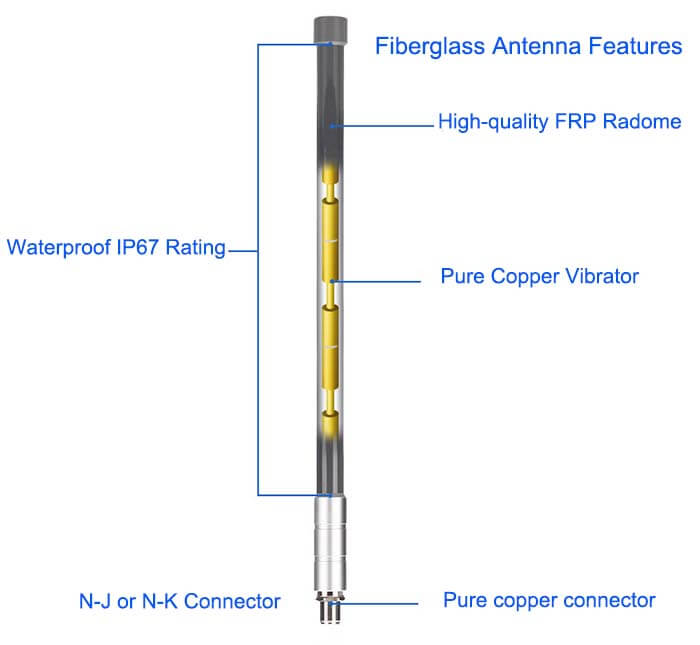
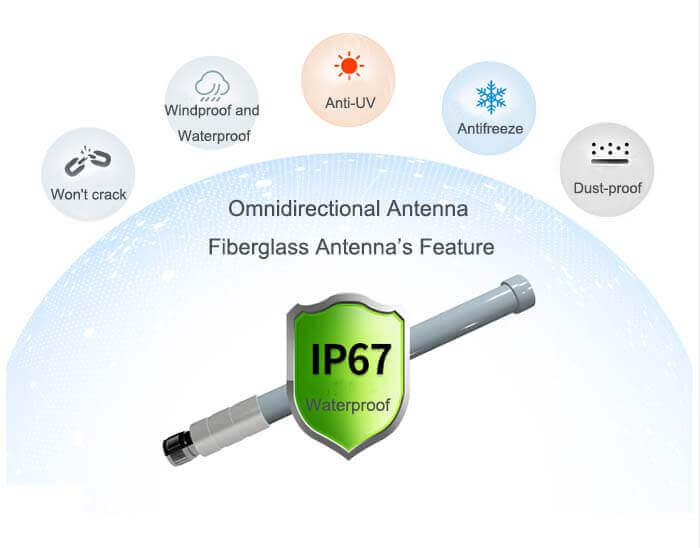
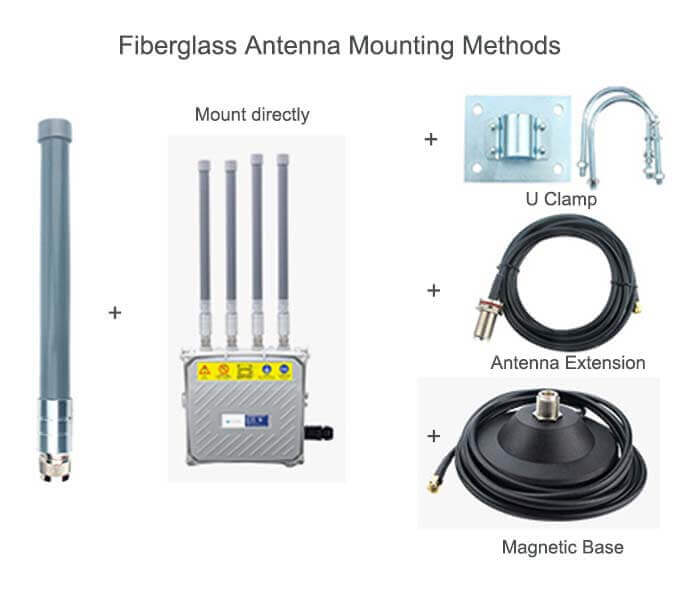
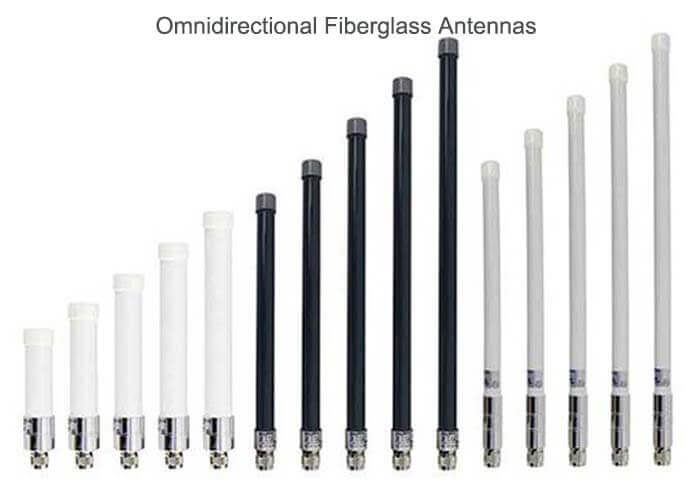
High-performance 4dBi Lora Antenna Applications


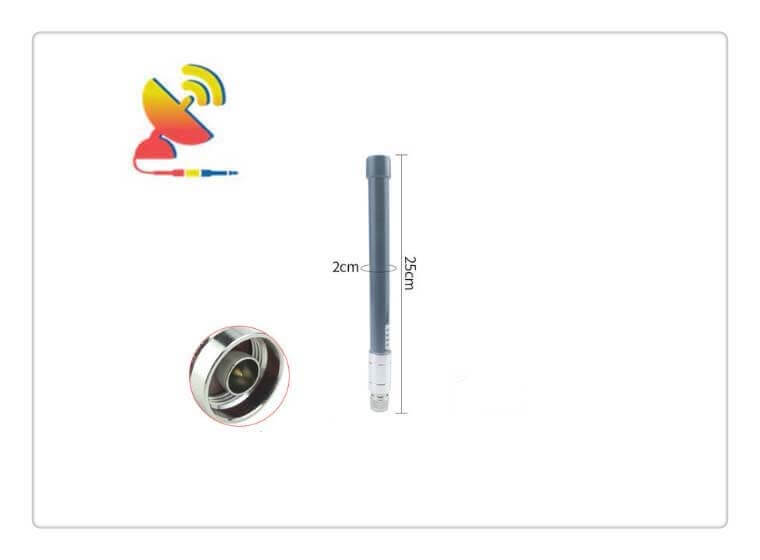
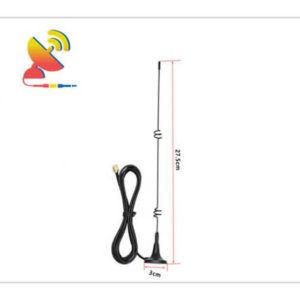
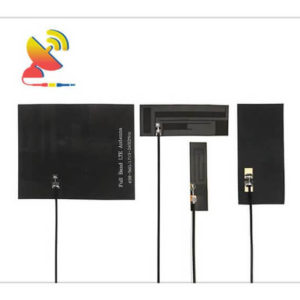

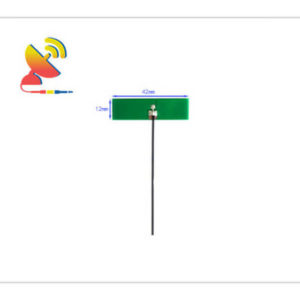
Reviews
There are no reviews yet.